PAINT CORRECTION

Paint Thickness Gauges
Paint thickness gauges are an essential tool for anyone serious about paint correction and those using car polishers on a regular basis.
Paint thickness gauges simply measure the amount of paint between the tip of the gauge and the substrate, typically steel or aluminium body of a vehicle. More expensive gauges can measure the thickness of paint and even individual layers of paint on other surfaces such as plastics and carbon fibre, however these come at serious cost and typically outside the scope of even professional detailers. A paint thickness gauge simply measures the thickness of the entire paint, this then gives you a good idea to the level of paint on the vehicle, as well as being a fantastic tool to quickly identify if a panel has been repainted or had accident damage.
By taking a paint thickness reading on a panel and then comparing it to a un-lacquered surface such as a door shut or underside of the bonnet will give you an idea as to the total thickness of clear coat. This then goes you an idea of the thickness of the clear coat, the important later for a detailer, because by using abrasives to correct the paint will remove some clear coat. So having a reading on the thickness of the paint is very important to help prevent 'strike through' which would require the panel being repainted.
Paint Correction Process
Once you have an idea of the thickness of your car's clearcoat using a measuring gauge (suggested; Nexdiag PTG), you can move forward to the correction process.
Please note that we have discussed the decontamination process in Chapter 1. Foam washing and Claying are a compulsory pre-requisite to Paint Correction.

Pick a test panel. Think of the various compounds and pads in these systems like sandpaper and bear in mind that different paints vary in hardness. Both the pads and compounds have different grits, and you want to make sure you have the right combination to start with before going over the entire car. Pick a small section of a panel of the vehicle and use it as a test subject to find the right combination for the paint.
Do least aggressive to most aggressive testing. It’s a good idea to start testing with the middle-of-the-road options in terms of how aggressive the products are. The idea is simply to run a test to see how aggressive you need to be in order to take the scratches out of the paint. We only want to remove as little material as necessary to leave as much behind as we can when removing scratches.
After your test, look over the surface from different angles or use a flashlight to reveal any microscopic scratches. If your test combination does a decent job but leaves behind some imperfections, try the next most aggressive combination and repeat until you find what produces the best results.
A note on compound application. When you apply the compound to a fresh pad, you’ll want to put around five or six pea-sized drops on the pad and dab the paint with the pad in a few places to spread the compound over the work area before starting the polisher. You won’t need to use as much product after the initial pass with the fresh pad, but you’ll want to follow the same process to ensure even product distribution and reduce slinging.
Repeat in small sections. Once you find the right combination to remove scratches in the paint, you’re ready to start working over the entire car. Don’t take on too much at once, though. Instead, work in small sections at a time but not so small that you’re repeatedly going over the same areas in short succession. Something like two-foot by two-foot squares is typical.
If you work over too large or too small of an area, you can cause several issues, including clogged pads and overheating the paint. As you work the sections, you’ll want to make around three passes with overlapping lines to make sure you’re thoroughly working the area. As you finish each section, go over it with a microfiber towel and surface cleaner to remove the polish left behind.
It’s also important to note that the paint on edges and corners is thinner than it is on flat surfaces. Don’t overwork these areas as you can easily strip away too much material. A few quick passes with light pressure should do the trick.

Rinse and repeat. Once you’re done going over the vehicle with your starting combination, you’ll want to go over it again with a fine polish and pad to remove the haze left behind by the cutting compound. You don’t necessarily need to work with the next least aggressive combination and continue to work your way back to the final polish, but that’s ultimately dependent on the situation. To determine the next appropriate step, test another section, inspect the results, and work from there, which may very well be moving to the final polish.
CONCLUSION
Stand back, take in the shine, and pat yourself on the back. Just don’t take too long because you have Coating and Sealing to do. It’s not a bad idea to give the paint another quick pass with a surface cleaner to ensure everything is as clean as possible. After you’re done doing that, lay down a layer of your favorite wax or ceramic coating and call it a day.

